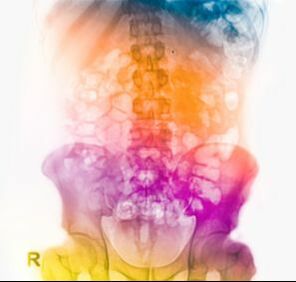 We NEED to spread the word on Pelvic Floor Health. Things have gotten so much better in terms of awareness, but education on women's health and their bodies needs to be shouted from the rooftops! The Pelvic Floor is the foundation of our bodies. "A woman's pelvic floor muscles support her bladder, womb (uterus) and bowel (colon). The urine tube (front passage), the vagina and the back passage all pass through the pelvic floor muscles. Your pelvic floor muscles help you to control your bladder and bowel. They also help sexual function." [1] So yup - pretty important! Historically pelvic floor dysfunction has become common, and often joked about - "I can't jump on the trampoline because I've had a baby." "I pee when I sneeze." "Oh my back is sore - that's just how your body is after you have a baby." So many generations of women have had to rely on pantyliners, depends or pose pads due to urine leakage. Their quality of life lowered, not being able to participate in activities they love due to incontinence or pain. Be sure to let your older female relatives know that Pelvic Floor Physiotherapy exists and it is never too late! Incontinence is NOT normal, back pain, painful sex can all be addressed with pelvic floor physiotherapy. Symptoms of Pelvic Floor Dysfunction [2]:
Most pelvic floor dysfunction conditions are a result of pelvic floor muscles either being too weak (hypotonicity) or too tight (hypertonicity). Pelvic floor muscles often become hypotonic or hypertonic because of:
Pelvic Floor Dysfunction is not limited to women who've had a baby, men and women who haven't conceived can also be affected! When should you see a Pelvic Floor Physiotherapist?? It is never too early or too late. I recommend seeing one in pregnancy and following up early postpartum. During pregnancy a physio can help determine if you are doing kegels properly, if you have any alignment or postural issues, and provide a wealth of education on your body. I've had clients who were dealing with back pain for many years - with the help of pelvic floor physio they were finally able to feel better! Many times issues can be corrected with breathing and alignment strategies. Typically, we never receive any education or awareness on proper alignment, technique or breathing at any stage, so our whole society in general has pretty bad alignment and breathing. As moms we often become martyrs and never take time for ourselves. We suffer through pain and soldier on, saying we are too busy to book the appointment. You guys we NEED to advocate for ourselves, and OUR bodies. So we can be strong, healthy and feel confident getting back to the activities we know and love. Head over to our resources page for local Saskatoon Physios. And PLEASE spread the word - tell your grandma's, your aunts, your moms and friends. Let's take back our bodies and women's health - you have nothing to be ashamed of. References [1] https://www.continence.org.au/pages/pelvic-floor-women.html [2] https://my.clevelandclinic.org/health/diseases/14459-pelvic-floor-dysfunction [3] https://www.closingthegap.ca/guides/pelvic-floor-dysfunction-the-signs-symptoms-and-treatments/
1 Comment
|
AuthorAmanda Brindley Archives
August 2022
Categories |
| Fitbump Saskatoon | blog |
s t r e n g t h . c o m m u n i t y. m o t h e r h o o d.
Telephone+1 (306) 250-9715
|
|
 RSS Feed
RSS Feed